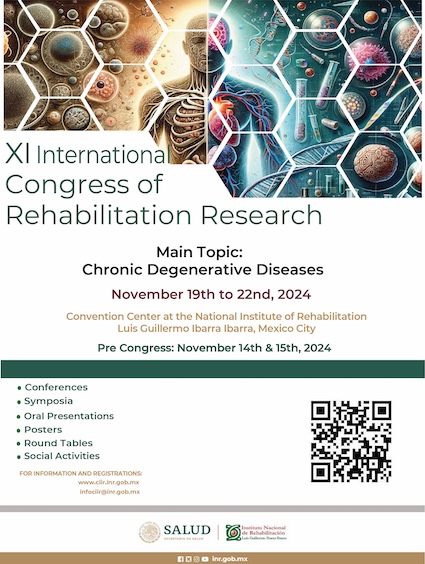A case report of Escobar syndrome
Keywords:
Escobar, pterygium, multiple, receptor, acetylcholineAbstract
Non-lethal multiple pterygium syndrome or Escobar type is characterized by presenting multiple pterygium and congenital contractures; due to these features, it is considered as a subtype of multiple congenital arthrogryposis. It has an autosomal recessive inheritance pattern; how- ever, there are a few case reports with an autosomal dominant inheritance, and in addition, it shows variable expression among affected individuals. The syndrome has been associated with mutations in the CHRNG gene located in the locus 2q37.1. This article presents the case of a Mexican patient with a clinical diagnosis of Escobar syndrome, with the next symptoms: multiple pterygia, arthrogryposis, facial dysmorphism, short stature and vertebral fusions; all of them are clinical features of this disease. The patient meets the criteria for establishing the clinical diagnosis of Escobar syndrome; however, up to date, it has not been possible to make the molecular study to confirm the diagnosis. The aim of this work is to contribute to the knowledge of a low-frequency disease which requires a multidisciplinary approach for its diagnosis and treatment in order to improve the quality of life of these patients.
References
Home-OMIM-NCBI [Internet].Disponible en: http://www. ncbi.nlm.nih.gov/omim.
Hoffmann K et al. Escobar syndrome is a prenatal myas- thenia caused by disruption of the acetylcholine receptor fetal γ subunit. Am J Hum Genet. 2006; 79 (2): 303-312.
Vaglio A, Guecaimburú R, Larrandaburu M, Quadrelli A, Quadrelli R. Síndrome de Escobar o pterigium múltiple no letal. A propósito de un caso. Arch Pediatr Urug. 2009; 80 (4): 278-283.
Escobar V, Bixler D, Gleiser S, Weaver DD, Gibbs T. Multiple pterygium syndrome. Am J Dis Child. 1978; 132 (6): 609-611.
Chong JX et al. Autosomal-dominant multiple pterygium syndrome is caused by mutations in MYH3. Am J Hum Genet. 2015; 96 (5): 841-849.
Vogt J et al. Mutation analysis of CHRNA1, CHRNB1, CHRND, and RAPSN genes in multiple pterygium syn- drome/fetal akinesia patients. Am J Hum Genet. 2008; 82: 222-227.
Morgan NV et al. Mutations in the embryonal subunit of the acetylcholine receptor (CHRNG) cause lethal and Escobar variants of multiple pterygium syndrome. 2006; 79 (2): 390-395.
Vogt J et al. CHRNG genotype-phenotype correlations in the multiple pterygium syndromes. J Med Genet. 2012; 49 (1): 21-26.
Prontera P et al. Familial occurrence of multiple pte- rygium syndrome: expression in a heterozygote of the recessive form or variability of the dominant form? Am J Med Genet. 2006; 140 (20): 2227-2230.
McKeown CM, Harris R. An autosomal dominant mul- tiple pterygium syndrome. J Med Genet. 1988; 25 (2): 96-103.
Tolmie JL, Patrick A, Yates JR. A lethal multiple pte- rygium syndrome with apparent X-linked recessive inheritance. Am J Med Genet. 1987; 27 (4): 913-919.
Bissinger RL, Koch FR. Nonlethal multiple pterygium syndrome. Adv Neonatal Care. 2014; 14 (1): 24-29.
Downloads
Published
How to Cite
Issue
Section
License
Copyright (c) 2016 Instituto Nacional de Rehabilitación Luis Guillermo Ibarra Ibarra

This work is licensed under a Creative Commons Attribution 4.0 International License.
© Instituto Nacional de Rehabilitación Luis Guillermo Ibarra Ibarra under a Creative Commons Attribution 4.0 International (CC BY 4.0) license which allows to reproduce and modify the content if appropiate recognition to the original source is given.



